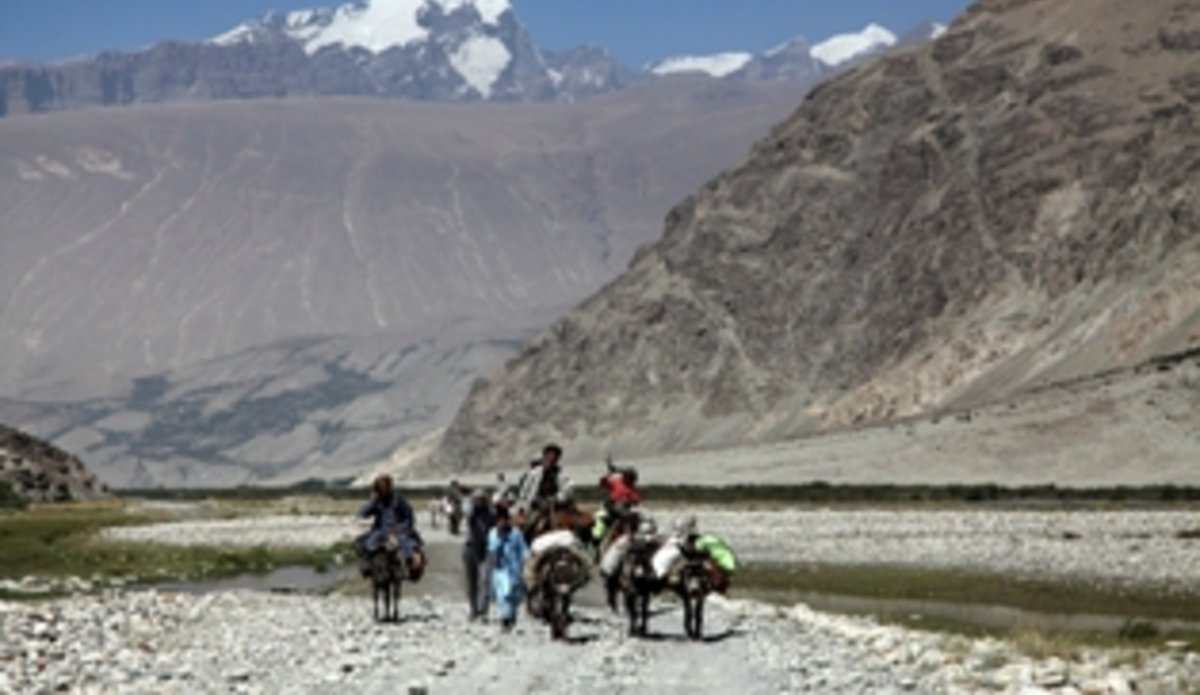Biodiversity Conservation Program Launched
KABUL - Last year a group of conservationists set up a camera in a hard-to-reach valley of the Central Highlands region. Their camera was connected to sensors which could detect movement and would take photos when there was activity in the area. After that the group left the area for several months. What these conservationists were hoping to photograph were some of Afghanistan’s rare animal species which live in these mountains in Bamyan province. Their patience was rewarded. Download the newspaper PDF
In March, when the conservationists from the Wildlife Conservation Society (WCS), working with the National Environment Protection Agency (NEPA), returned to collect the camera, they were discovered a trove of images of animals operating in their natural habitat. Most spectacular of all was an image of a Persian Leopard, an animal feared to be extinct because there had been few reported sightings in nearly 50 years.
That photography project is just a small part of a much more grand conservation plan by the government of Afghanistan. The National Biodiversity Strategy and Action Plan includes creating a national conservation areas system, creating a herbarium and seed bank for all common and rarer plant species, preserving forests, rivers and mountain areas, boosting awareness about nature throughout Afghan society and creating a conservation science degree program at the University of Kabul. Financing restoration projects and sharing benefits from nature is also a vital component of the overall plan.
While the Afghan Environmental Protection Agency, Ministry of Agriculture, Irrigation and Livestock (MAIL) and the Environmental Protection Agency are taking the lead on these projects, they are being supported with technical assistance and funding by international technical assistance projects, including the United Nations Enviroment Programme (UNEP). Communities that live within areas that are marked as conservation areas are also being consulted so that plans to preserve nature don’t inhibit economic growth.
“This is a government led approach but with communities as the main custodians,” said Andrew Scanlon, the Country Programme Manager for UNEP in Afghanistan. UNEP’s conservation programme started under EU funding in 2005. “In creating these programs we are trying to build on traditional systems of conservation that are already in place, and empower local people to look at their environment as a resource and an asset.”
Creating national parks in Afghanistan isn’t a new idea. A national system was first proposed in the 1970’s under King Zahir Shah. At that time the country had 17 nature preserves but they were mainly intended as hunting reserves. Plans faltered after 1979 when Russian invaded. What’s different now is the scale of the project, which could see conservation areas in each of Afghanistan’s provinces, as well as the emphasis on community development, education and conservation.
So far, 5 conservation areas are in active management, but plans exist to create another 25 between now and 2020. The largest of these preserves is Band-I Amir a 670 square kilometre area in the Central Highlands. Last year about 100,000 Afghans visited the park. Shah Foladi, in the Koh-e Baba Mountains is a community conservation area and important source of five of Afghanistan’s main rivers. The most visited preserve is a wetland area, Kol-e Hashmat Khan, north of Kabul, which drew about 500,000 visitors last year. Two high mountain nature preserves are being prepared along the Wakhan Corridor in the High Pamir areas of Badakshan.
The project to preserve plants hopes to create a seed bank of about 3,000 plant species that can only be found in Afghanistan. This effort mirrors a previous program launched in the 1950s at the University of Kabul.
The Environment Science Programme at Kabul University was approved by Afghanistan’s Ministry of Higher Education in 2010 as a four year course of study. About 40 students a year are be enrolled in studies that emphasising natural resource management, urban environmental issues, and technical and scientific skills for environment management, including wildlife conservation and nature management. A second course in environment conservation studies in the faculty of agriculture will be started in 2012. As these students graduate and start work in the coming years, a new Afghan wave of environmental protection and sustainable development champions is coming on line.
 UN
UN







